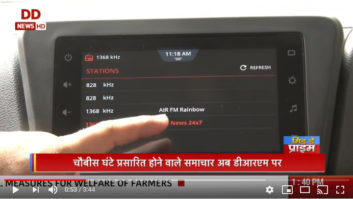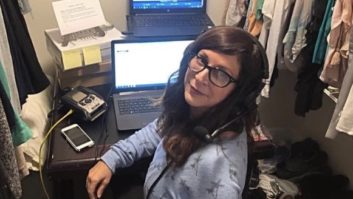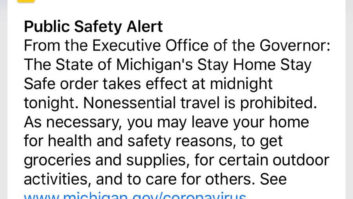
The author is vice president of MediaTracks Communications and executive producer of “Radio Health Journal.”
Public affairs programming on radio is vastly different than it was a few decades ago.
For one thing, there’s a lot less of it. Prior to the first round of radio deregulation in 1981, AM stations were required to air “non-entertainment” programming for 8% of their weekly broadcast hours; for FMs it was 6%.
The stringent rules resulted in stronger news commitments on most stations than are present today. However, most music stations didn’t want to break the format during prime hours, so the edict meant lots of overnight newscasts and public affairs blocks starting at 4 a.m. on Sunday, when a lonely board op would drag a big stack of reel-to-reel tapes into the studio. There was often a requirement to send the tape back to the local organization or syndicator so it could be used again.
“Non-entertainment” also didn’t always mean “news and public affairs,” as regulators probably intended. For example, back in the 1970s, the half-hour religious “Powerline” program aired seemingly everywhere on Sunday mornings. “Church programming,” as some used to refer to it, was easy to acquire, cost stations nothing and was accepted as public affairs. It was well produced and helped clock the needed hours.
PUBLIC AFFAIRS TODAY
The quota requirements are long gone, and today stations can concentrate on what they do best full-time. There’s much less public affairs on radio, but it’s usually still aired on Sunday mornings.
However, without having to scramble for programs simply to fill the time, today stations have no need to run anything less than the best, most informative and entertaining public affairs shows. Weaker national shows have been winnowed out. Highly produced programs featuring nationally prominent guests with in-depth coverage of the issues have taken their place.

But while there’s less public affairs on air, the FCC still takes it seriously, and expects stations to be good public trustees in return for the privilege of holding a license and absence of strict regulations.
The main requirement today is a quarterly report, uploaded in a timely manner to the FCC’s online database, listing local problems and issues, and describing the station’s programming (usually public affairs) that has addressed these issues.
Each station’s quarterly report is available for public view at any time as part of their Online Public Inspection File. Previously, stations were required to maintain a public file on paper at the studio, and they were typically unread by the public. So now, public affairs is much more visible — if a station is derelict in its issues-based programming or filings, it’s readily apparent. Instead of having to send an FCC inspector on an unannounced visit, now the agency can simply look online, and while it’s exceptionally rare to lose the license, some stations have been fined tens of thousands of dollars for deficiencies in the public file.
Over the last few years, there have been a couple of trends in radio public affairs that run in opposite directions.
One is toward running exclusively local public affairs — programs produced by a station or cluster for its own air, utilizing local guests. Many clusters admit it’s not a job they relish, especially when staffing is already tight. But when multiple dayparts are voice tracked from out of town, some local content may be perceived as necessary. Stations may also be concerned that since the issues they’re addressing are local, the response must also be.
However, as far as the FCC is concerned, there is no requirement that public affairs programs be locally sourced, only that they address the issues important to their community in the quarterly report. The vast majority of problems and issues listed by stations are universal, such as “education” and “unemployment.”
[C-SPAN Radio Marks 20 Years of Covering Public Affairs]
This has led to the second trend: the use of syndicated public affairs programs by thousands of stations nationally. Syndicated public affairs shows address these issues, and since they can secure the best guests and, often cover them more thoroughly than a local show ever could. Many stations use syndicated programs exclusively to satisfy compliancy issues, while others combine them with locally produced programs.
Syndicated public affairs programs, such as our programs “Viewpoints Radio” and “Radio Health Journal,” offer stations an online quarterly report on the problems and issues they’ve covered. Affiliates are able to simply drag-and-drop this report into their FCC filing. With FTP delivery of these shows, station automation can also be programmed to download for air every week automatically, creating truly hands off public affairs that still serve the public interest and satisfy the requirements of the FCC.
FCC rules have always driven public affairs programming. The rules are less onerous now, but still a serious consideration. Stations have found a variety of ways to meet them, even at a time when many station staffs are stretched to the max.
MediaTracks Communications produces and syndicates weekly, half-hour public affairs/ascertainment-based programs that satisfy FCC compliance requirements.
Comment on this or any story to [email protected] with “Letter to the Editor” in the subject field.












